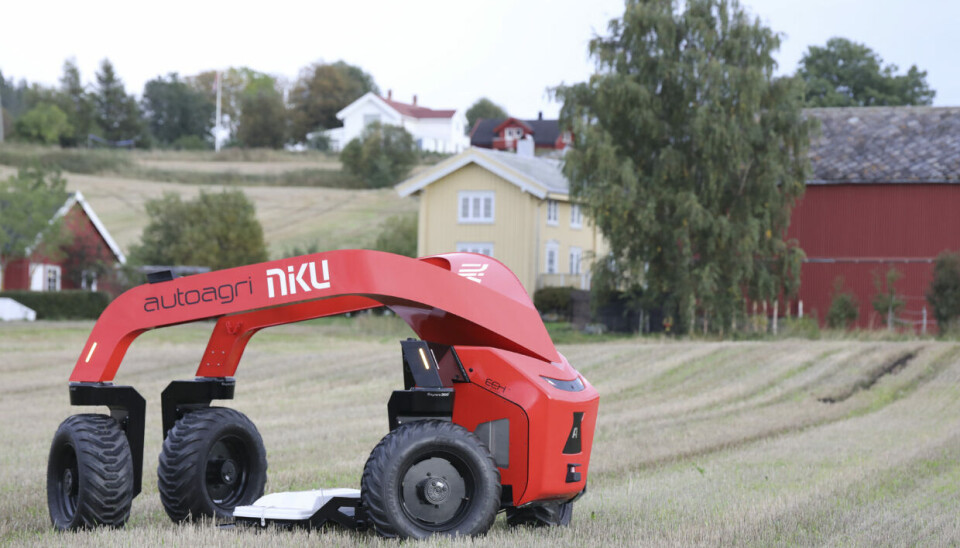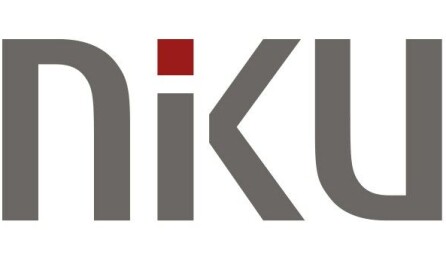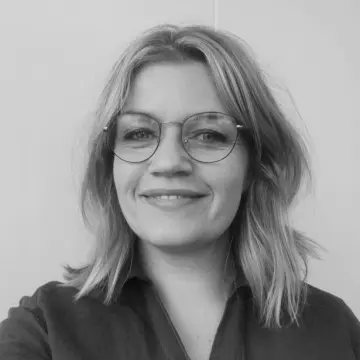THIS CONTENT IS BROUGHT TO YOU BY NIKU - Norwegian Institute for Cultural Heritage Research - read more

This robot is on the hunt for Norway's hidden cultural heritage
This is a revolutionary self-driving ground-penetrating radar for archaeological investigations.
The Norwegian Institute for Cultural Heritage Research (NIKU) and the technology company AutoAgri are launching a revolutionary self-driving ground-penetrating radar (GPR) for archaeological survey.
The technology promises increased efficiency, climate friendly solutions, and accurate mapping of hitherto undiscovered cultural heritage.
Collects data all by itself
The new GPR that is now being tested seems very promising. The autonomous system performs the data collection alone and without a driver. Instead of spending many hours in a tractor first and interpreting the data afterward, the archaeologist can now work continuously with the data in real time.

“Automatic transfer of data to a PC means that we can already start processing and interpreting the data in the field,” Knut Paasche says. He is head of the Digital Archeology Department at NIKU.
The new GPR system delivers significantly higher resolution and a clearer signal than the equipment used until now. This makes the results better and more accurate, and will lead to improved archaeological results.
This equipment is particularly well suited for recording traces of archaeological structures, which are classified as automatically protected cultural heritage, hidden under cultivated land.
Especially in the case of archaeological registrations in advance of major infrastructure projects, such as roads and railways, this can make the work more efficient. The use of motorised, now also autonomous, GPR systems will be a good supplement to existing archaeological recording methods.
First of its kind
This system combines an autonomous vehicle with an updated GPR system.
The project’s main goal is to integrate these two components mechanically, electronically, and using specially developed software from NIKU and AutoAgri.
"This is a great example of how interdisciplinary collaboration can produce innovative technology that serves society by preserving our common cultural heritage," Erich Nau says.

He is NIKU’s project manager for the development of the new system.
The robot is currently being tested on locations
A prototype of the system was completed in 2021, and the fully developed system is now in use.
The first operation with the self-driving GPR takes place at two farms in a central part of Norway, in collaboration with the NTNU University Museum and archaeologists from Trøndelag country.

The survey is part of the Farmers on Land, Vikings at Sea project. It aims to explore the Late Iron Age and the Viking Age to better understand Norway's history.
The project sheds light on the extensive upheavals that took place in society in the latter part of the Iron Age (Merovingian and Viking) and the early Middle Ages.
Central to the project are processes related to the formation of the state, the change of religion, and the national assembly in the period leading up to the battle at Stiklestad in 1030.
Looking for more
Already last year, NIKU made new and especially exciting discoveries with georadar on the Vinne farm in Verdal. Now the archaeologists want to see what else might be hidden underground at Auran and Vinnan farms in central Norway.
They hope the findings can help to shed light on the formation of the state, the unification of Norway, and the change of religion in Norway a thousand years ago.
“Many wonderful finds have previously been made here using metal detectors. Such findings often indicate structures under the topsoil. Perhaps the new vehicle will reveal more ploughed-over graves, a trading post, or other traces of activity from the Viking Age?” Knut Paasche says.
Here you can see the autonomous ground-penetrating radar at the Vinnan farm in central Norway.
Climate friendly technology
Cultural heritage conservation is an important part of overall nature and environmental protection. The robot is fully electric and helps to reduce climate emissions and noise pollution.
Previously, these tractors were diesel-powered.
“Climate friendly solutions reducing emissions at the same time as they help protect hidden cultural monuments under the ground is as a double blessing in this context,” Paasche says.

This content is paid for and presented by NIKU - Norwegian Institute for Cultural Heritage Research
This content is created by NIKU's communication staff, who use this platform to communicate science and share results from research with the public. NIKU is one of more than 80 owners of ScienceNorway.no. Read more here.
More content from NIKU:
-
Archaeologists have uncovered a long-lost medieval market town at Hamar
-
Swedish King Charles XII transported massive ships overland to attack a Norwegian fortress. Researchers have now uncovered the forgotten route
-
According to an Old Norse saga, a man was thrown into a well in 1197 to poison the water. Researchers can now reveal more about who he was
-
Promising results with ground-penetrating radar in Iceland
-
The Gjellestad burial mound belonged to the Iron Age elite
-
How Climate Change is threatening Heritage in the Arctic





































